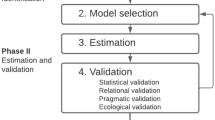Abstract
The importance of artificial intelligence is constantly increasing due to ongoing research successes and the implementation of new applications based on it. It is already described as one of the core technologies of the future. This technology is also increasingly being applied in the field of safety-related applications, which enables the implementation of innovative concepts for novel protection and assistance systems. However, for this to lead to a benefit for human safety and health, a safe or trustworthy artificial intelligence is required. However, the increasing number of accidents related to this technology shows that classical design principles of safe systems still need to be adapted to the new artificial intelligence methods. On the one hand, this requires a basic understanding of the components of trustworthy artificial intelligence, but on the other hand, it also requires an understanding of AI-specific sources of risk. These new sources of risk should be considered in the overall risk assessment of a system based on AI technologies, examined for their criticality, and managed accordingly at an early stage to prevent later failure of the system.
Access this chapter
Tax calculation will be finalised at checkout
Purchases are for personal use only
Similar content being viewed by others
References
Delponte, L.: European Artificial Intelligence leadership, the path for an integrated vision. Policy Department for Economic, Scientific and Quality of Life Policies, European Parliament, Brussels (2018)
European Commission: Communication on Artificial Intelligence for Europe. European Commission, Brussels (2018)
PwC: Artificial intelligence in HR: A no-brainer. PwC (2018)
PwC: AI will create as many jobs as it displaces by boosting economic growth. PwC (2018)
DMV: Autonomous Vehicle Disengagement Report 2019. State of California Department of Motor Vehicles (2019)
LawGeex: Comparing the Performance of Artificial Intelligence to Human Lawyers in the Review of Standard Business Contracts. LawGeex (2019)
Author information
Authors and Affiliations
Corresponding author
Editor information
Editors and Affiliations
Rights and permissions
Copyright information
© 2021 Springer Nature Switzerland AG
About this paper
Cite this paper
Steimers, A., Bömer, T. (2021). Sources of Risk and Design Principles of Trustworthy Artificial Intelligence. In: Duffy, V.G. (eds) Digital Human Modeling and Applications in Health, Safety, Ergonomics and Risk Management. AI, Product and Service. HCII 2021. Lecture Notes in Computer Science(), vol 12778. Springer, Cham. https://doi.org/10.1007/978-3-030-77820-0_18
Download citation
DOI: https://doi.org/10.1007/978-3-030-77820-0_18
Published:
Publisher Name: Springer, Cham
Print ISBN: 978-3-030-77819-4
Online ISBN: 978-3-030-77820-0
eBook Packages: Computer ScienceComputer Science (R0)




